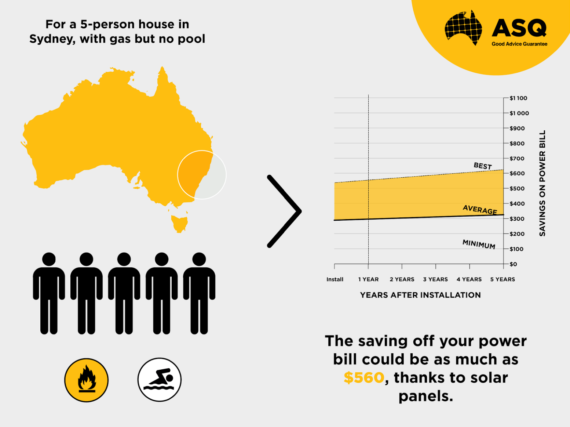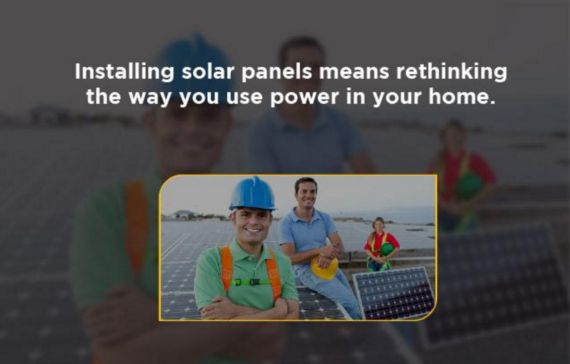Australian Power Purchase Agreements — Diving Into Digital Solar
Posted on May 20, 2016
In the last decade, solar power adoption in Australia has greatly soared, making solar power the most popular source of renewable energy*. Around 15% of all Australian homes have rooftop solar panels installed, but the difference in figures between rental properties and owner-occupied properties is huge.Reports say that 1% of the rental property market has solar PV panels installed, but thanks to Melbourne-based tech startup Matter, things are about to change.Today, Australia’s 2 million rental homes are getting access to more affordable solar energy under an innovative Digital Solar scheme which enables landlords to make money while their tenants’ savings increase.The scheme divides the savings between homeowners and their tenants. Similar PPAs (Power Purchase Agreements) have been rolled out throughout the US with great success, enabling a larger portion of the residential market to access renewable energy technology. The way Digital Solar works is as a broker that initiates deals between landlords and their renters. The property owner pays for the solar panel installation and then sells the power to the tenant at a cheaper rate than electricity from the national grid.Generally, this arrangement saves tenants about $300 each year on their electricity bill, while the landlord makes an average of $1500 annually in profits — with solar installation costs fully covered within 4–6 years.Clearly, this is an untapped market with massive potential, considering that only 1% of Aussie rental homes have solar panels installed. The major problem with Digital Solar’s solution is that there are no existing standard procedures for either landlords or renters in solar-equipped properties. For example, some landlords may benefit from solar feed-in tariffs and still pass the entire cost of electricity bill to the tenant. Again, others may deduct all or some of the FIT from the power bill. Still, others may charge exorbitant rent and still pass all savings on to their tenant. In either situation, the landlord will generate only a trickle of profit from their utility, which is initially very costly to set up.In the era of climate change, the use of clean energy is more important than ever before. By making it profitable for landlords to install solar panels on their investment properties, Matter hopes to increase the number of solar systems installed on rooftops of rental properties across Australia.
The major problem with Digital Solar’s solution is that there are no existing standard procedures for either landlords or renters in solar-equipped properties. For example, some landlords may benefit from solar feed-in tariffs and still pass the entire cost of electricity bill to the tenant. Again, others may deduct all or some of the FIT from the power bill. Still, others may charge exorbitant rent and still pass all savings on to their tenant. In either situation, the landlord will generate only a trickle of profit from their utility, which is initially very costly to set up.In the era of climate change, the use of clean energy is more important than ever before. By making it profitable for landlords to install solar panels on their investment properties, Matter hopes to increase the number of solar systems installed on rooftops of rental properties across Australia. The Digital Solar system will be built on Matter’s existing software, which is used by water and electricity providers in thousands of Australian homes. This system is powerful enough to handle complex tariffs, including the feed-in tariff when electricity is exported back to the grid.The company simply acts as a broker to help its customers get a good deal on solar installation and does not retail solar panels or inverters. It makes arrangements for solar installation even on homes with pre-existing systems and offers hands-on support to clients throughout the process.The Digital Solar smart monitors can also be installed with new solar systems or retro-fitted to the existing solar power systems. The Digital Solar device accurately tracks renters’ use of solar-generated power and automatically bills them at a reasonable rate agreed upon by the two parties.
The Digital Solar system will be built on Matter’s existing software, which is used by water and electricity providers in thousands of Australian homes. This system is powerful enough to handle complex tariffs, including the feed-in tariff when electricity is exported back to the grid.The company simply acts as a broker to help its customers get a good deal on solar installation and does not retail solar panels or inverters. It makes arrangements for solar installation even on homes with pre-existing systems and offers hands-on support to clients throughout the process.The Digital Solar smart monitors can also be installed with new solar systems or retro-fitted to the existing solar power systems. The Digital Solar device accurately tracks renters’ use of solar-generated power and automatically bills them at a reasonable rate agreed upon by the two parties.
The “Split Incentive” Issue
So why are rentals not turning solar into a revenue stream? The answer is that it has never been profitable for homeowners to invest in solar panels just so their renters can enjoy the benefits. This is a widespread problem in many countries, including the UK, the US, Japan and of course Australia.“The problem has always been that if you’re a tenant you don’t want to pay to put solar on someone else’s roof while as a landlord you don’t want to pay for solar panels when you’re just giving the tenant free power,” says Simon Barnes, Matter co-founder.This is where Matter comes in – it plans to make the system profitable for homeowners to install solar systems through the Digital Solar solution. Part service, part gadget, Digital Solar enables landlords to correctly meter the amount of solar energy tenants are using and then run their solar PVs like a micro-utility. No doubt, there are rental houses with solar systems installed already, even though such are a rarity. The major problem with Digital Solar’s solution is that there are no existing standard procedures for either landlords or renters in solar-equipped properties. For example, some landlords may benefit from solar feed-in tariffs and still pass the entire cost of electricity bill to the tenant. Again, others may deduct all or some of the FIT from the power bill. Still, others may charge exorbitant rent and still pass all savings on to their tenant. In either situation, the landlord will generate only a trickle of profit from their utility, which is initially very costly to set up.In the era of climate change, the use of clean energy is more important than ever before. By making it profitable for landlords to install solar panels on their investment properties, Matter hopes to increase the number of solar systems installed on rooftops of rental properties across Australia.
The major problem with Digital Solar’s solution is that there are no existing standard procedures for either landlords or renters in solar-equipped properties. For example, some landlords may benefit from solar feed-in tariffs and still pass the entire cost of electricity bill to the tenant. Again, others may deduct all or some of the FIT from the power bill. Still, others may charge exorbitant rent and still pass all savings on to their tenant. In either situation, the landlord will generate only a trickle of profit from their utility, which is initially very costly to set up.In the era of climate change, the use of clean energy is more important than ever before. By making it profitable for landlords to install solar panels on their investment properties, Matter hopes to increase the number of solar systems installed on rooftops of rental properties across Australia.How Digital Solar Works
This system allows landlords to manage their solar panels as a ‘mini utility’. It monitors rooftop solar installations through small wireless smart meters made to work with any solar equipment brand (in-home batteries included), and the electricity provider.Matter’s main objective is not to make Australian homes fully self-sufficient, but rather reduce their reliance on the expensive power grid. This solution is underpinned by Matter’s platform called Hana, which analyses the elements of each property, calculates the size of the solar panel and the expected savings as well as monitoring the system’s performance. The Digital Solar system will be built on Matter’s existing software, which is used by water and electricity providers in thousands of Australian homes. This system is powerful enough to handle complex tariffs, including the feed-in tariff when electricity is exported back to the grid.The company simply acts as a broker to help its customers get a good deal on solar installation and does not retail solar panels or inverters. It makes arrangements for solar installation even on homes with pre-existing systems and offers hands-on support to clients throughout the process.The Digital Solar smart monitors can also be installed with new solar systems or retro-fitted to the existing solar power systems. The Digital Solar device accurately tracks renters’ use of solar-generated power and automatically bills them at a reasonable rate agreed upon by the two parties.
The Digital Solar system will be built on Matter’s existing software, which is used by water and electricity providers in thousands of Australian homes. This system is powerful enough to handle complex tariffs, including the feed-in tariff when electricity is exported back to the grid.The company simply acts as a broker to help its customers get a good deal on solar installation and does not retail solar panels or inverters. It makes arrangements for solar installation even on homes with pre-existing systems and offers hands-on support to clients throughout the process.The Digital Solar smart monitors can also be installed with new solar systems or retro-fitted to the existing solar power systems. The Digital Solar device accurately tracks renters’ use of solar-generated power and automatically bills them at a reasonable rate agreed upon by the two parties.
